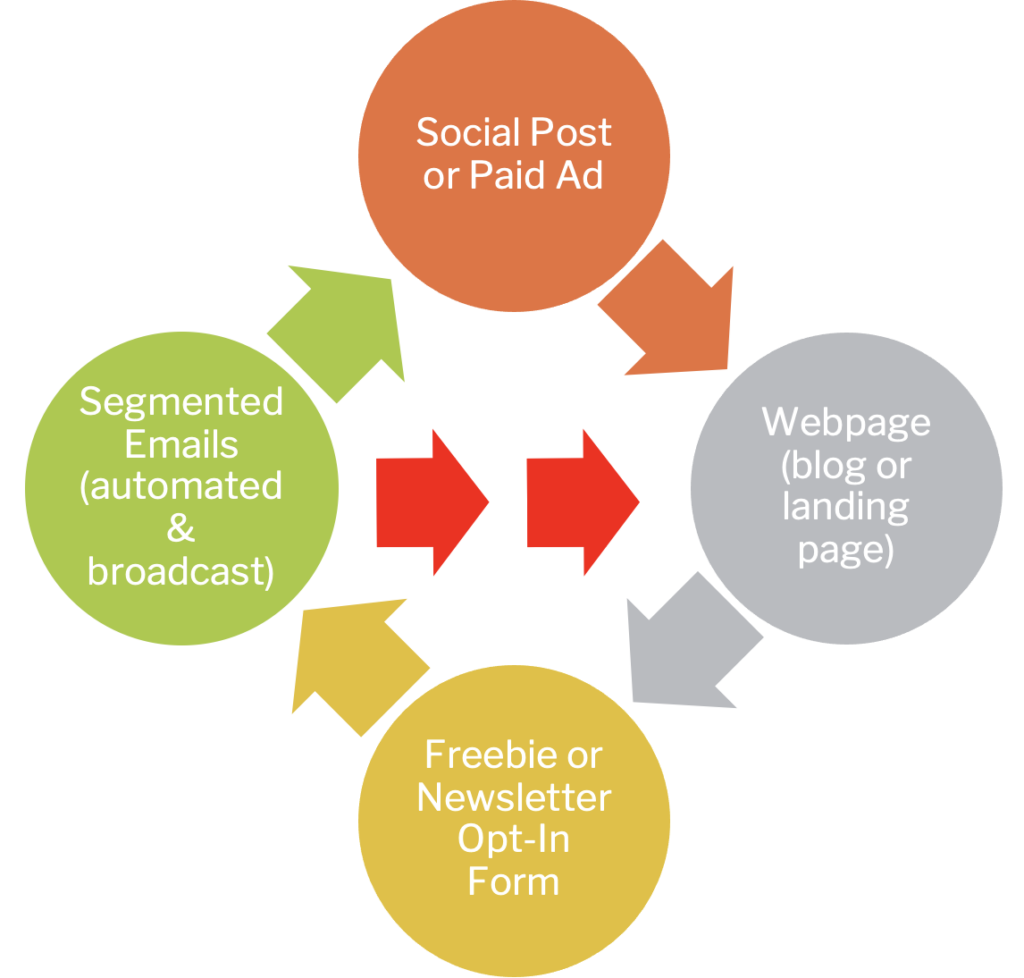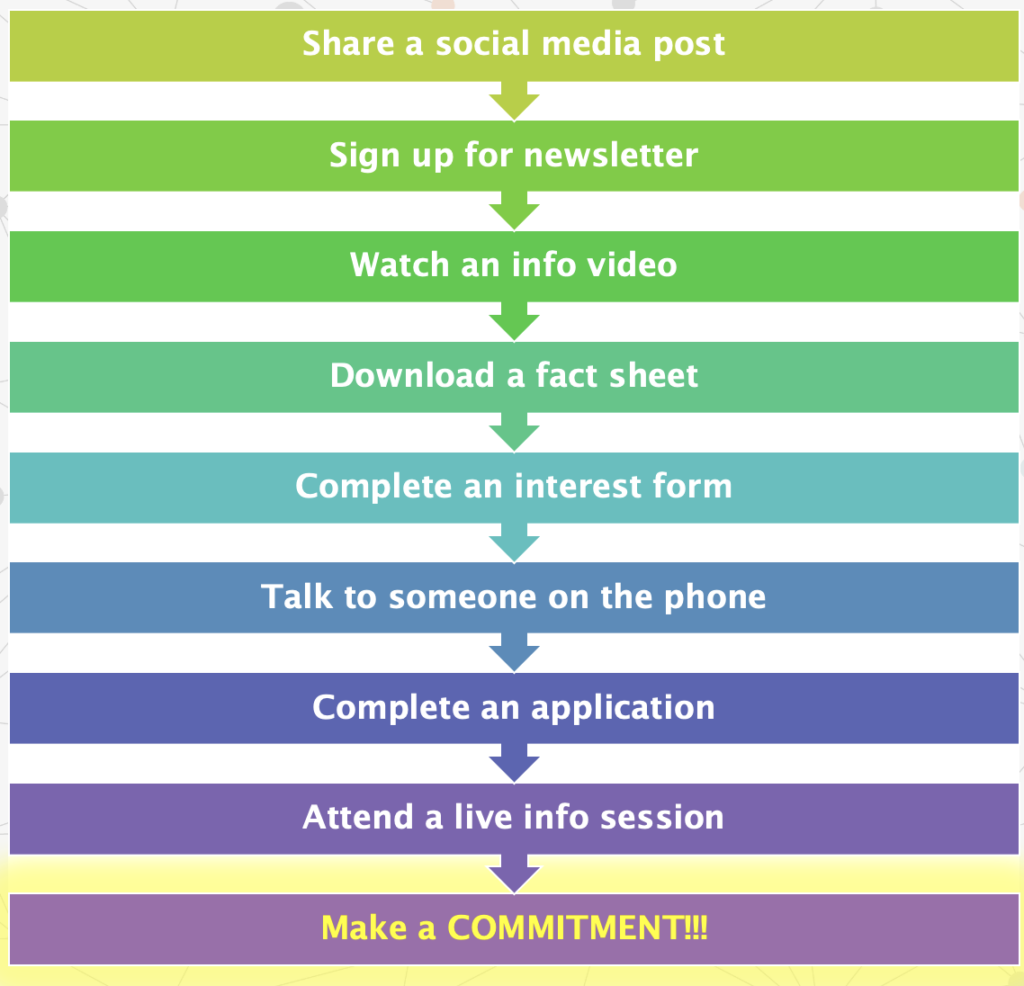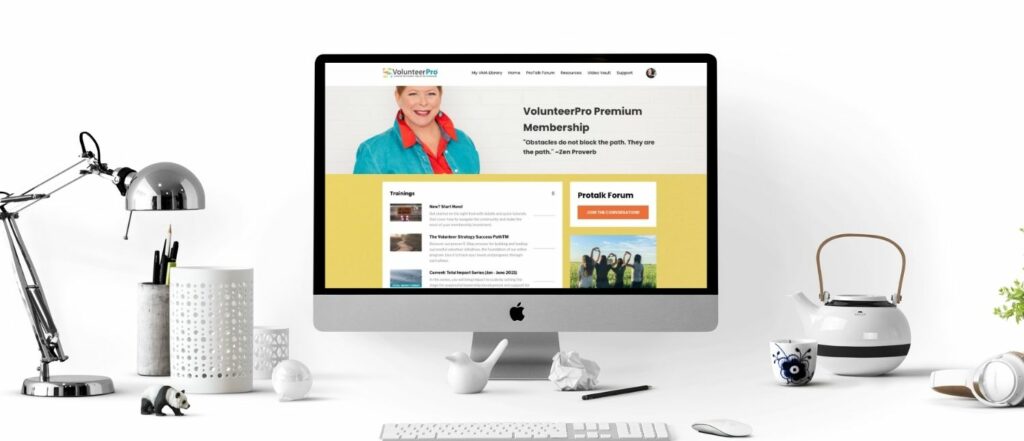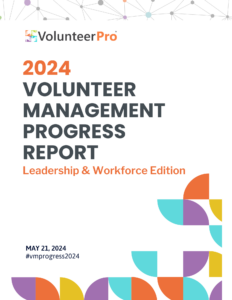Nonprofit Marketing: How Marcoms & Volunteer Services Can Work Toward Greater Synergy
When implementing your nonprofit marketing strategy, do the communications staff work in close collaboration with those who are recruiting volunteers? If so, you’re likely the exception, not the norm.
In today’s world, most volunteer services and communications staff consider their work as separate enterprises.
It’s rare for an integrated nonprofit marketing strategy to be developed that includes communication and nurturing of all public stakeholder groups – from donors to volunteers to community members – across boundaries and mapped to a purposeful ladder of engagement.
What’s more, the nonprofit’s overall marketing strategy often has little to do with attracting or engaging future or current volunteers except for a few social media posts or mentions in the newsletter.
Unfortunately, this practice of working in silos doesn’t serve the ultimate aims of most organizations – to create a sustainable foundation for its operations and scale its impact.
In addition, working separately does little to acknowledge and align with the reality of how supporters engage with charities.
The fact is that many nonprofit supporters serve multiple roles. So, siloed communication can feel disjointed and impersonal and can erode your relationships with your followers.
Research has shown that donors are volunteers and volunteers are donors. What’s more, volunteers AND donors were once simply interested followers.
For all the stats around volunteers and donors, check out our post 5 Surprising Myths About Volunteers and Donors HERE >>
When the various teams who communicate with the public – outreach, development, volunteer services, communications – don’t collaborate, marketing messages risk being received as contradictory and cadences as competitive.
Working in siloes, rather than collaboratively, is also an inefficient way to go about things, and it wastes the precious time and energy of those who are often stretched thin.
It’s time to change that.
The Case for Collaborative Nonprofit Marketing Campaigns
While many staff involved in nonprofit marketing search outside their organizations for community partners that can help boost the results of their campaigns, it’s a missed opportunity if they neglect the tremendous value and power of collaboration right at home.
People in your own organization can be of immense help to you. They can provide advice, support, technical assistance, and free word-of-mouth advertising that you just can’t buy.
Alternately, if you have a rocky or nonexistent relationship with other work units, they can tarnish your reputation and credibility by incorrectly framing who you are and what you do.
So, take the time to build the bridges and educate everyone about your department’s key projects and goals, whether you work in volunteer engagement, fundraising, outreach, or marketing.
Consider how you might collaborate around the following:
- Annual agency communications calendar
- Access and cost-sharing of standard tools
- List building and segmentation
- Timing and types of asks
- Reinforcement of key talking points
- Overlap of donor and volunteer messaging
- Campaign dates
- Sequencing and timing of emails
- Campaign troubleshooting
- Benchmarking and analysis
- + More!
Think of your nonprofit marketing as an ecosystem that is also influenced by all the other nonprofit marketing and communications that occurs within your organization.
Why do I call it an “ecosystem”? Because everything works together.
Sample Nonprofit Communications Ecosystem
The mutual goal is to deepen the engagement of ALL your stakeholders over time.
And it generally takes multiple touches to do so.
Consider this — 47% of consumers view 3-5 pieces of content created by a company before talking to a salesperson from that company.
So, the more your cause’s audience can interact with your organization’s relevant content, the more likely they are to take action.
The key is that the content and messaging are relevant to the reader’s needs and interests, and that they are timed to not overwhelm or contradict each other.
For example, does it make sense to send an invitation to volunteers to attend an appreciation event one week and a fundraising ask the next? Not likely! But I’ve heard of it happening. In the end, the volunteer reported feeling insulted and even less likely to give. Better timing of the communications would have made all the difference.
How to Align Nonprofit Marketing for Success
If you don’t coordinate with other departments, you risk looking disorganized at least, and risk alienating your subscribers at the worst.
So, to maximize the impact of nonprofit marketing it makes sense to align both messages and timing across departments.
If you haven’t collaborated much in the past, consider setting up a kick-off meeting to better understand the nonprofit marketing priorities and projects your colleagues are involved in.
When meeting with your peers, below is a simple meeting agenda to get things started off on the right foot. The best meetings are spent listening to THEIR needs and pressures first BEFORE making your requests. This will also give you extra intel on how to frame your needs!
Suggested nonprofit marketing kick-off agenda:
- History and operations of each department
- Current priorities, schedule of events, and deadlines for each
- What each need from the other (support, compliance with processes, communication styles, process for resolving conflicts, etc.)
- Ideas about how each can support the other
- Communications tools that might be available to share
- Next steps
Before you start developing new nonprofit marketing materials or campaigns, it’s also a good idea to review what you’ve already got in place and how it is working (or not).
To better understand what’s already in the works, partner on conducting a communications audit that includes all methods and media used across the agency.
Be sure to review ALL your marketing channels.
A “marketing channel” can be any place where your messages are shared — such as your agency website, social media, or the lobby of the local senior center.
You’ll want to compile as complete a picture as possible.
Channel Options Online & On Land
Below is a list of possible things to review. While not all may be relevant, consider those where your organization’s messages and calls to action are shared.
- Your agency’s lobby
- The lobbies of any partner agencies
- Community or school lobby, program and/or reception area
- Your agency’s website
- The websites of any partner agencies
- Broadcast media (radio, TV, etc.)
- Print Media (newspapers and magazines)
- Podcasts
- Instagram, Pinterest, YouTube, & other photo/video sharing sites
- LinkedIn, Facebook, Twitter and other social-sharing tools
- Your agency’s blog or newsletter
- Email and text messages
- Volunteer recruitment websites
- Public transportation
- Direct mail
- Webinars and workshops
- Online community forums
- Annual reports
- Others
Across these channels, check for the following:
- Diversity of communications mix
- Brand conformity
- User experience and navigation
- Consistency of messaging
- Effectiveness of messaging
- Review and rating of channels (for both attracting and converting followers)
- Deep dives on tactics (campaign reviews and what worked)
Once you have a clear picture of all the stakeholder communications occurring throughout your organization, you can see where there are both gaps and duplications of effort.
You can also assess what’s working and double down on those nonprofit marketing tactics.
How to Plan Integrated Nonprofit Marketing Campaigns
In addition to conducting a communications audit, you can also plan for an integrated campaign, that aligns the work of all departments and reinforces each department’s marketing goals and objectives.
To create a quick and dirty nonprofit marketing plan you can implement right away, work with your colleagues to answer the following questions …
- What are our organization’s biggest needs?
- Who are we trying to reach?
- What do we have to offer our stakeholders and followers?
- What are our key messages?
- What is the best way to deliver our messages?
- How do our messages reinforce one another while staying focused on one call to action per communication?
- How will we know we got it right?
Wondering what might go into your marketing plan? Check out How to Use Nonprofit Marketing to Craft a Reliable Supporter Pipeline HERE>>
In addition, it’s helpful to review or develop an ideal journey for each stakeholder type and see how they link together.
Baby Steps to Conversion and Commitment
When planning, ask …
- What are various actions we can ask our followers to take that represent increasing levels of commitment?
- What are their informational and emotional needs at each step?
- Where will each department place them?
- What will they look like (button, opt-in form, link, etc.)?
- What will they say?
Taking time to map out these journeys helps you visualize potential synergies and see where opportunities for amplification and extension of stakeholder support roles.
How does a volunteer become a donor and vice versa? How are general followers converted into more formal supporters and advocates?
When you plan for the entire journey, rather than simply asking “what kind of social media should I post?”, you are more likely to arrive at an integrated, multi-level plan with touchpoints that can reinforce one another.
Whether you start with a simple conversation or create a more deeply integrated plan, coordinating nonprofit marketing plans across your organization is well worth the effort and can be a win-win for everyone.
For more, check out How to Develop a Digital Marketing Volunteer Recruitment Plan for Your Nonprofit HERE >>
VolunteerPro Membership: Deepen Your Volunteer Marketing and Communications with Our Tools and Training
Ready to take your volunteer communications to the next level? We can help!
VolunteerPro Membership helps you build or renovate an effective, what’s-working-now volunteer program with less stress and more joy, so you can ditch the overwhelm and confidently carry your vision forward.
It is the only implementation program of its kind and helps your organization build maturity across five phases of our proprietary system, the Volunteer Strategy Success PathTM.
Within membership, you’ll find in-depth training on how to build an effective digital marketing strategy to attract and engage supporters in your good works. You’ll also have access to monthly coaching calls to ask questions and get feedback on your campaign design.
Membership includes access to a huge digital library of what-works-now content, live monthly seminars, workshops, and coaching calls, as well as a vibrant community of volunteer leaders to share ideas and questions with.
Enrollment for new members is open NOW.










